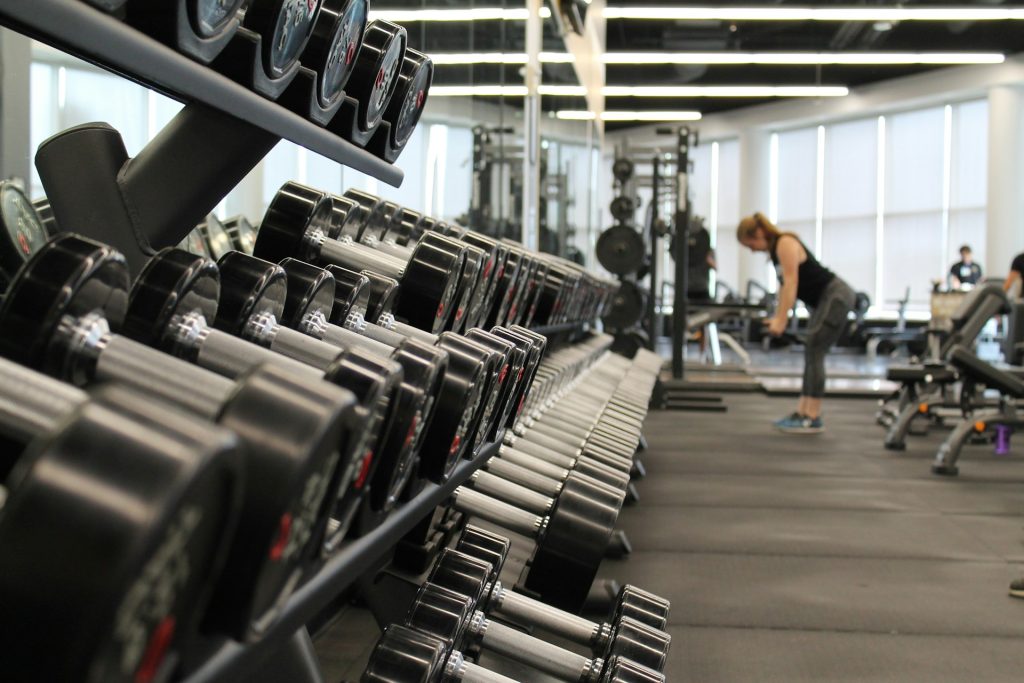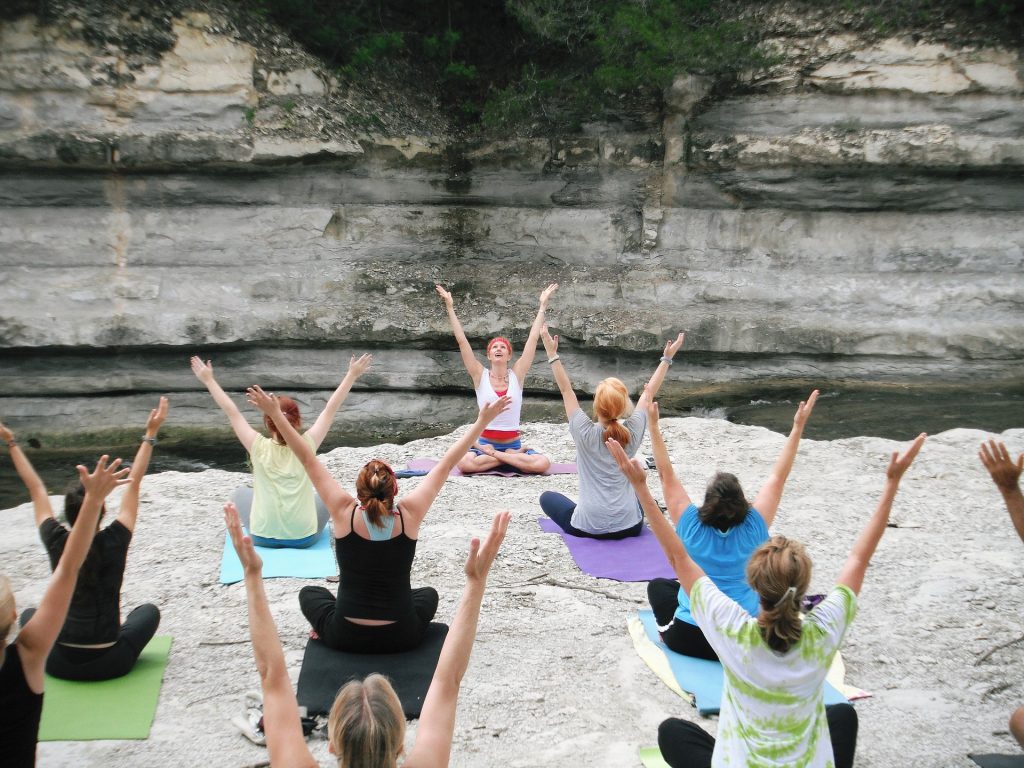Fitness and Movement Improves Your Energy and Mood
In the journey towards holistic well-being, the significance of fitness and movement cannot be overstated. It is the foundation of a balanced and healthy lifestyle. Incorporating regular physical activity and mindful movement into our daily routines has several advantages that go far beyond the physical realm. Fitness and mobility contribute to our wellness by improving cardiovascular health, muscle strength, and mental clarity. One who has physical activity as a regular part of life will have improved energy levels, a better mood, and a quality life.
The Holistic Approach to Wellness Through Exercise:
The mind and body are known to be two interrelated systems. A change in one system has an impact on the other one. Physical movement and exercise releases endorphins within the bloodstream. Endorphins that function as mood lifters and are known to relieve pain. A regular supply of endorphins significantly reduces stress, sadness, and anxiety, improving mental health and general psychological well-being (Anon n.d.).
Likewise, the types of thoughts, feelings, beliefs, and attitudes, positive or negative, that we nurture in our minds impact the body’s physical health. Thus, this combined inter-connected cause and effect on both systems allows for the development of a holistic approach where each aspect of the human body is considered and treated as one.
The Effect of Physical Activity on the Mind-Body System:
Physical activity and exercise are crucial to the overall well-being of the human body. Incorporating various exercises that target flexibility, strength, balance, and cardiovascular health is essential. This beneficial improvement in the body serves to enhance muscular tone to improve heart health and resilience. Aside from the physical benefits, practicing various mind-body therapies helps build a profound connection between body and mind. This encourages the person to be completely attuned to their bodies, allowing them to appreciate the present moment fully.
Mind Body Therapies:
Mind-body therapies are physical activities that focus on mental and physical well-being simultaneously. Some mind-body therapies that can be used daily are yoga, tai chi, qigong, relaxation, and other outdoor activities. These therapies help encourage healing and vitality by deliberately emphasizing body movement, mindfulness, and presence in movement. By engaging in these practices, individuals can experience improved flexibility, balance, and strength, as well as reduce stress, anxiety, and tension.
Yoga for Wellness:
Yoga, originating in ancient India, is a centuries-old practice that addresses body, mind, and spirit dimensions. It offers a multifaceted approach to wellness through postures, breathing exercises, and meditation techniques, promoting mental clarity and emotional balance. With over 5,000 years of practice, yoga provides a pathway to greater self-awareness, inner tranquility, and a harmonious connection between body and mind (Green et al. 2019).
Benefits: Yoga has tremendous physical benefits that promote resilience in the human body. It significantly enhances flexibility, range of motion, and joint strength. Not only does it focus on flexibility, but it also helps in building muscle strength. Moreover, yoga poses improve body posture. Bad posture is a significant contributor to causing strains in the muscles. Strengthening the core muscles through yoga also supports an upright and aligned posture, reducing pressure on the spine and supporting structures (Khanal and Khanal 2021).
Through this mind-body therapy, an individual focuses on their breathing pattern while holding the pose. This encourages the relief of any muscle tension while also causing mental relaxation. Thus, it is well known to help in anxiety management (Shohani et al. 2018).
Different yoga styles, such as Hatha, Vinyasa, and Restorative, cater to different needs and preferences. Each style harnesses its unique blend of movement and meditation. Thus, yoga poses not only help in engaging different muscles to nurture physical strength but also in emotional stability. This helps in achieving a truly balanced and revitalized life.
Tai-Chi for Mind-Body Harmony:
Tai Chi, an ancient Chinese martial art, combines martial arts, philosophy, and Chinese medicine to balance the body’s internal energy (qi or chi) and improve vital energy flow. It represents the yin and yang principle, emphasizing balance and interconnection. Tai Chi’s slow, flowing motions promote awareness, mindfulness, and body alignment, synchronizing movement and breathing (Wayne et al. 2014).
Benefits:
Tai Chi is a gentle, deliberate movement that gradually increases flexibility, joint mobility, and suppleness. Its slow, controlled nature requires balance, improving proprioception and coordination. Tai Chi suits individuals with joint problems or recovering from accidents, offering low-impact fitness without excessive strain on joints. It is adaptable, allowing individuals to customize the intensity of their practice to suit their abilities, gradually increasing strength, flexibility, and balance.
Tai Chi movements involve core muscles, maintaining posture, stability, and body strength. The rhythmic, flowing movements and controlled breathing promote relaxation, reducing tension, stress, and overall well-being.
Tai Chi may deliver these physical advantages and contribute to a balanced, healthy lifestyle when practiced regularly. Its gentle tone and emphasis on mind-body connection make it an excellent practice for promoting physical and mental well-being.
Embracing Nature: Outdoor Activities for Wellness:
Outdoor activities like hiking, cycling, jogging, and leisure walks offer a rejuvenating way to connect with nature and improve overall well-being. These exercises not only get the body moving, but they also make you feel more connected to your surroundings. Scientific research has demonstrated spending time outside reduces stress, anxiety, and depression while improving mood and cognitive performance. Individuals who embrace nature and engage in outdoor activities tap into the healing power of the natural world, producing a profound sense of well-being that surpasses physical activity (Marini et al. 2022).
The Connection between Nature and Well-Being:
Ecotherapy is a concept that promotes mental and emotional well-being by utilizing the therapeutic effects of nature. Time spent in natural surroundings provides psychological benefits such as relaxation, amazement, peace, and closeness. This link decreases stress, anxiety, and depression and improves general psychological resilience. Engaging with nature via activities such as forest bathing, gardening, or breathtaking vistas is a potent antidote to city life, cultivating a holistic feeling of well-being.
Benefits of Mindful Movement in Nature:
Outdoor workouts and mindfulness practice foster a profound connection with the body and the natural surroundings. Individuals create an immersive experience that exceeds ordinary physical exertion by focusing on each movement, breath, and sensation encountered. The surroundings become an arena for increased awareness, where the rustling of leaves, the caress of a soft wind, and the dance of sunshine on the skin mingle with the rhythm of movement. This integration enhances the workout experience by developing a profound sense of unity with nature and an increased sense of well-being. This serves as a transformative journey of both physical vitality and inner clarity (Wicks et al. 2022).
Outdoor activities offer a diverse range of options for wellness, including hiking, cycling, and jogging. These activities improve cardiovascular health and engage various muscle groups, such as leg muscles, lower body, and core. Being amidst nature also boosts mood, as the fresh air, natural scenery, and sunlight trigger the release of endorphins, promoting euphoria and stress reduction. These activities provide a holistic experience that revitalizes both body and spirit, ultimately nurturing a more profound sense of well-being.
Conclusion:
Exercise is a transformational journey towards harmony, energy, and self-fulfillment, enhancing the mind-body connection. Yoga, Tai Chi, and outdoor activities provide a comprehensive approach beyond physical exercise’s limits. These mind-body therapies combine purposeful movement with awareness, resulting in a strong link between body and mind. Slow, deliberate postures and flowing sequences promote physical strength, flexibility, and balance while promoting mental clarity and emotional harmony.
Similarly, engaging in outdoor activities while immersed in nature enhances the experience, increasing the pleasant influence on the body and the mind. The natural symphony of leaves, fresh air, and surrounding symphonies create a fusion of well-being, unlocking the potential of fitness for well-being.
Sources:
Anon. n.d. “The Neuroprotective Effects of Exercise: Maintaining a Healthy Brain Throughout Aging – PMC.” Retrieved August 1, 2023 (https://www.ncbi.nlm.nih.gov/pmc/articles/PMC6296262/).
Green, Ellen, Annette Huynh, Lori Broussard, Brady Zunker, Jerril Matthews, Claudia L. Hilton, and Karen Aranha. 2019. “Systematic Review of Yoga and Balance: Effect on Adults with Neuromuscular Impairment.” American Journal of Occupational Therapy 73(1). doi: 10.5014/ajot.2019.028944.
Khanal, Hari, and Uttam Khanal. 2021. “Benefits, Barriers and Determinants of Practicing Yoga: A Cross-Sectional Study from Kathmandu, Nepal.” Journal of Ayurveda and Integrative Medicine 12(1):102–6. doi: 10.1016/j.jaim.2021.01.007.
Marini, Sofia, Mario Mauro, Alessia Grigoletto, Stefania Toselli, and Pasqualino Maietta Latessa. 2022. “The Effect of Physical Activity Interventions Carried Out in Outdoor Natural Blue and Green Spaces on Health Outcomes: A Systematic Review.” International Journal of Environmental Research and Public Health 19(19):12482. doi: 10.3390/ijerph191912482.
Shohani, Masoumeh, Gholamreza Badfar, Marzieh Parizad Nasirkandy, Sattar Kaikhavani, Shoboo Rahmati, Yaghoob Modmeli, Ali Soleymani, and Milad Azami. 2018. “The Effect of Yoga on Stress, Anxiety, and Depression in Women.” International Journal of Preventive Medicine 9:21. doi: 10.4103/ijpvm.IJPVM_242_16.
Wayne, Peter M., Jacquelyn N. Walsh, Ruth E. Taylor-Piliae, Rebecca E. Wells, Kathryn V. Papp, Nancy J. Donovan, and Gloria Y. Yeh. 2014. “Effect of Tai Chi on Cognitive Performance in Older Adults: Systematic Review and Meta-Analysis.” Journal of the American Geriatrics Society 62(1):25–39. doi: 10.1111/jgs.12611.
Wicks, Claire, Jo Barton, Sheina Orbell, and Leanne Andrews. 2022. “Psychological Benefits of Outdoor Physical Activity in Natural versus Urban Environments: A Systematic Review and Meta-Analysis of Experimental Studies.” Applied Psychology: Health and Well-Being 14(3):1037–61. doi: 10.1111/aphw.12353.




